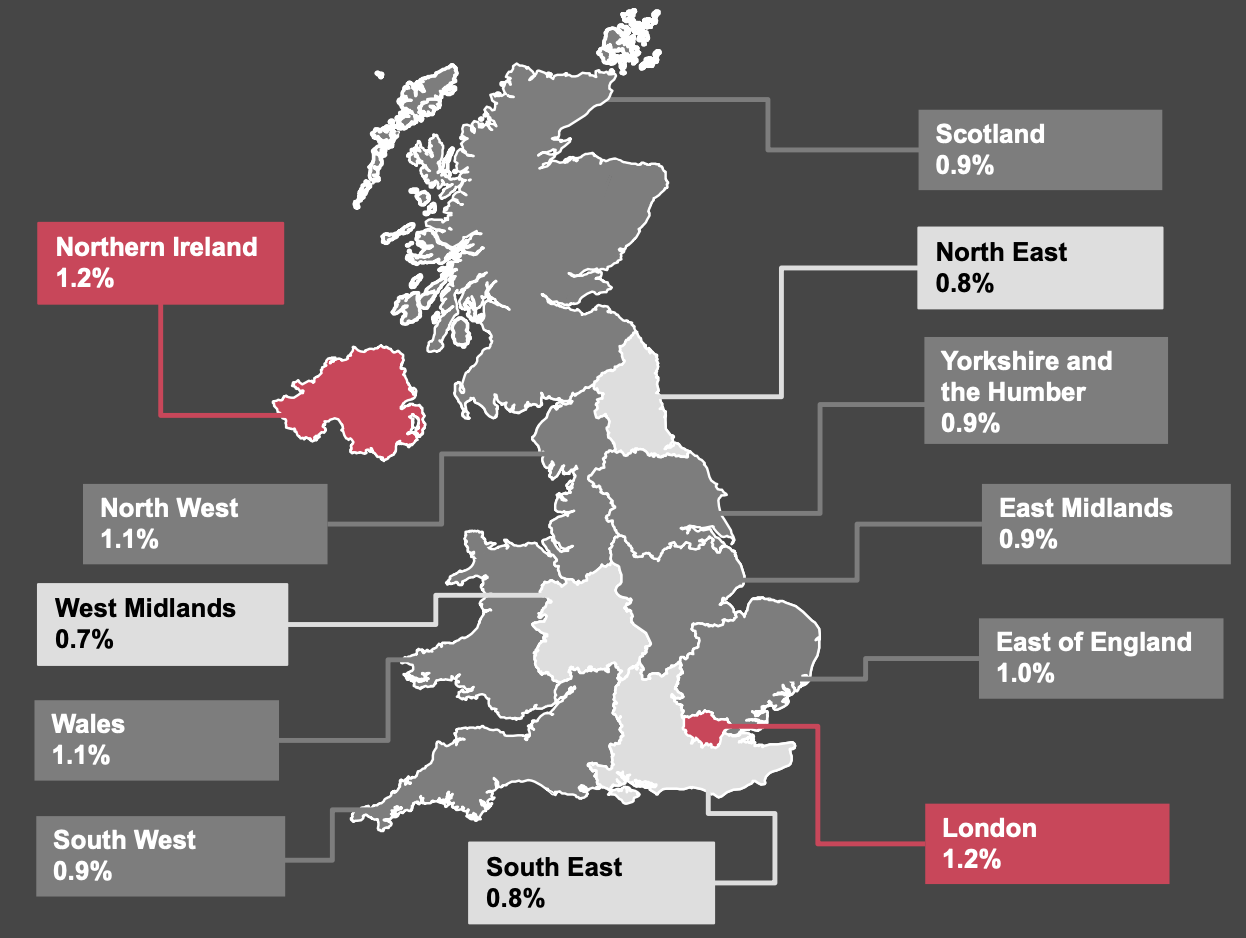PwC forecasts ‘subdued’ growth for Scottish economy in 2024

Jason Morris
Scotland’s economy is projected to grow more in this year compared with last year, with real GVA expected to be 0.9% higher across 2024, according to PwC.
The Big Four firm’s latest Economic Outlook reveals that, while considered subdued, the rate of growth north of the border is greater than that predicted for the West Midlands (0.7%), North East and South East (both 0.8%); and in line with rates for Yorkshire and Humber, South West and East Midlands. However, it lags behind other UK nations and regions, particularly London and Northern Ireland at 1.2%, the North West and Wales at 1.1%, and the East of England at 1.0%.
Scotland’s growth rate is also marginally lower than the projections for the UK’s real GDP, which is expected to grow by 1.0% in 2024.
The continuing regional disparities highlight strong growth in business activity and the public sector impacting London and Northern Ireland, respectively.

UK 2024 real GVA projections, by region (source: PwC UK Economic Outlook July 2024)
Similar to other regions in the UK, Scotland is impacted by the ongoing slowdown in the manufacturing sector. The financial services sector – a key contributor to Scotland’s economy – has also seen activity level out following its ‘pandemic boom’.
Jason Morris, regional market leader at PwC Scotland, said: “Whilst the predicted rate of economic growth in Scotland for this year could be described as subdued, the figures are more positive than those predicted for the end of 2023 (0.3%).
“The regional disparities that were highlighted in last November’s UK Economic Outlook are still prevalent, signalling that productivity and skills gaps remain.
“Our recent Framework for Growth highlighted the key focus areas business leaders would like to see the new government focus on in order to help drive growth – including skills and talent, infrastructure and digital transformation. All of these areas represent opportunities for our economy in Scotland.”
Another report co-produced by PwC and Connectr – the Youth Employment Index – found that Scotland’s economy could be boosted by around £3 billion per year by unlocking employment, training and educational opportunities for young people.
The figure is based on reducing the proportion of 16 to 24 year olds in Scotland who are considered as NEET (not in education, employment or training), which could yield annual GDP benefits of £65,000 per individual.
At 16.2%, Scotland has the second highest NEET rate of the UK’s nations and regions – behind only the North East – while the South West recorded the lowest (7.8%). The research shows that, by bringing the Scottish NEET rate down to South West levels, the nation could unlock GDP benefits of around £3.2bn per annum, and reduce its NEET population by around 46,000.
It goes on to identify the growing proportion of green jobs across the country as a route to reducing economic inactivity among young people.
Mr Morris said: “There isn’t a single solution to the problem of stimulating economic growth and reducing regional disparities, but a focus on skills, training and employment for our young people could create tangible economic benefits.
“This will not be an overnight remedy, as the reasons behind the high proportion of economically inactive young Scots must be identified before it can be rectified in order to allow us to fully leverage opportunities across Scotland – whether that be through green jobs, financial services or emerging tech and AI.
“Not only will this go some way to benefiting the Scottish economy, but it also ensures we nurture and retain a skilled and talented future workforce – something businesses across the country tell us is a top priority.”








